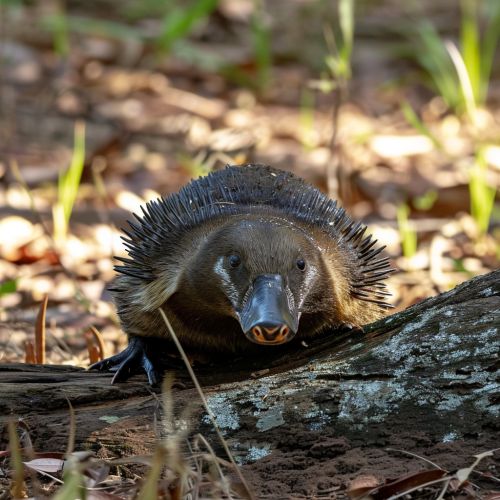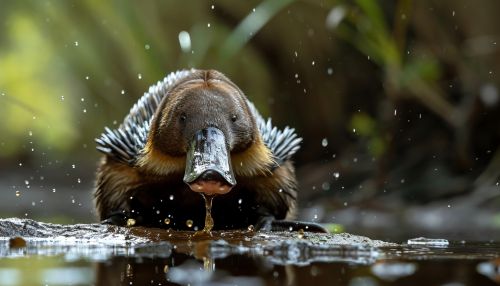Monotreme
Classification and Evolution
Monotremes are a unique group of mammals classified under the subclass Prototheria. This subclass is distinguished from the other two subclasses of mammals, the Therians (marsupials and placental mammals), by their distinctive reproductive methods. Monotremes are the only mammals that lay eggs instead of giving birth to live young. The term "monotreme" comes from the Greek words "monos" (single) and "trema" (hole), referring to their unique cloacal structure, a single opening for the digestive, reproductive, and urinary systems.
Monotremes are believed to have diverged from the mammalian tree more than 166 million years ago, during the Jurassic period. This makes them one of the oldest and most primitive groups of mammals. Their evolutionary history is not well understood due to the scarcity of fossil records. However, the few fossils that have been discovered suggest that monotremes were once more diverse and widespread than they are today.
Anatomy and Physiology
Monotremes possess a mix of reptilian and mammalian features. Like reptiles, they have a single cloaca, lay eggs, and have a similar bone structure in their shoulder girdle. However, they also possess mammalian characteristics such as fur, warm-bloodedness, and mammary glands for milk production.
The monotreme's skull is unique among mammals. It lacks the typical mammalian jaw joint and instead has a joint similar to that of reptiles. Their teeth are also unusual. Juvenile monotremes have a few simple teeth, but these are lost in adulthood and replaced by horny pads in the mouth.
Monotremes also have a lower body temperature than other mammals, typically around 30-32 degrees Celsius, compared to the 37 degrees typical of placental mammals. This lower body temperature is thought to be a primitive trait, reflecting the early evolutionary history of monotremes.
Reproduction and Development
Monotreme reproduction is unique among mammals. Females lay one to three leathery eggs, similar to those of reptiles, which they incubate in a pouch or nest. The young hatch in a very undeveloped state and are dependent on their mother's milk for survival.
The milk is secreted through the skin in the mother's pouch area, as monotremes lack defined nipples. The young use their stubby bills to lap up the milk that pools in the mother's pouch. The milk composition changes over the lactation period, adapting to the needs of the developing young.
Species
There are only five extant species of monotremes: the platypus and four species of echidnas, or spiny anteaters. The platypus is one of the most well-known monotremes, famous for its unique appearance with a duck-like bill, beaver-like tail, and otter-like body. It is native to eastern Australia and Tasmania.
Echidnas are found in New Guinea and Australia. They are known for their spiny coats and long, sticky tongues, which they use to catch ants and termites. There are four species of echidnas: the short-beaked echidna and three species of long-beaked echidnas.
Conservation
Monotremes are protected by law in all countries where they occur. The platypus is classified as "Near Threatened" by the International Union for Conservation of Nature (IUCN), while the long-beaked echidnas are classified as "Endangered". The main threats to monotremes include habitat loss, climate change, and predation by introduced species.


